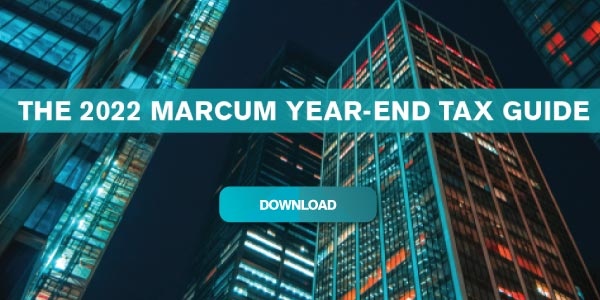Accounting Methods
The Tax Cuts and Jobs Act of 2017 (TCJA) significantly changed tax planning and reporting for years beginning in 2018. Now that we have had a few years to understand its implications, we must address some of the aspects of the Act whose impacts have changed due to inflation adjustments or expiring benefits within the law. Moreover, subsequent legislation, including the Coronavirus Aid, Relief, and Economic Security (CARES) Act and the Inflation Reduction Act (IRA) also altered the reality of certain components of the TCJA.
Method Selection
The ability to use the cash method of accounting often allows a taxpayer the ability to defer income, whereas the accrual method of accounting would accelerate the recognition of such income. Prior to TCJA, a business that had average annual gross receipts of $10 million or less was allowed to use the cash method of accounting. One of the more significant aspects of TCJA was to significantly increase the annual average gross receipts threshold to $25M, adjusted annually for inflation. The inflation-adjusted amount for 2022 is $27M, and the amount for 2023 is $29 Million. This annual average amount is calculated for the previous three tax years; in 2022, the calculation would be for 2019, 2020, and 2021. For entities in business for less than three full years, a calculation must be performed to determine the amount of time the entity has been in business for tax purposes.
This average annual gross receipts amount is used as the limitation permitting the cash method of accounting to be applied. Of course, as always, there is an exception to the rule. An example would be a partnership that is considered a tax shelter. A partnership (or any other entity except a C-corporation) where more than 35% of losses are allocated to limited partners or limited entrepreneurs is, by definition, a tax shelter. Thus, in this situation, the entity would be prohibited from using the cash method of accounting. Exceptions should be addressed prior to the average annual gross receipts analysis.
An additional consideration regarding the ability to use the cash method of accounting is that it has implications for other tax reporting rules; for example, a taxpayer that meets the average annual gross receipts test can use the cash method of accounting even if it has inventory. In addition, the uniform capitalization rules for overhead capitalization into inventory, whether manufacturing or distribution, is not required if the taxpayer qualifies for the average annual gross receipts limitation. Further, the use of the percent of completion method of accounting for long-term contracts is not required if the average annual gross receipts is below the inflation-adjusted limit ($29M for 2023).
Another significant change is the treatment of research and experimental (R&E) expenditures. For tax years beginning after December 31, 2021, taxpayers are required to capitalize and amortize all R&E expenditures that are paid or incurred in connection with their trade or business. Specifically, costs incurred for U.S.-based R&E activities must be amortized over five years, and costs incurred for foreign R&E activities must be amortized over 15 years. In addition to direct costs (wages, supplies, and amounts paid for the use of contractors), certain indirect costs (such as facilities costs and depreciation) can also qualify as R&E expenditures; therefore, an analysis should be performed to maximize the deduction.
In contrast, the R&D credit only allows direct costs. Further, the R&D credit is conceptually different from R&E expenditures. The R&D credit is a credit for increased research activities and thus must meet certain threshold amounts, whereas R&E expenditures are for amounts paid or incurred in the current year. An increase in activity is not required. For these reasons, the decision between utilizing the R&D credit or R&E expenditures is not an “either/or” decision.
Another consideration regarding this change in treatment of R&E expenditures is that for those that have reported R&E expenditures as expenses in prior years, a Form 3115, Application for Change in Accounting Method, must be filed to report this change in treatment of R&E expenditures. However, as the change occurs in post December 31, 2021, tax years, the cutoff method of reporting this change should be used. The cutoff method of reporting is when only items occurring subsequent to the beginning of the year of change are accounted for under the new accounting method for which the change is granted. Thus, there would be no prior year(s) income inclusion reported as a Section 481(a) adjustment on tax returns. A Section 481(a) adjustment refers to the Internal Revenue Code section requiring an adjustment to ensure that the change does not result in either an omission or a duplication of any items of income or expense.
Although there has been much speculation and bipartisan support for legislation postponing the requirement to capitalize and amortize R&E expenses, the timing of any possible legislative action has now become so short that it seems a slim possibility at best that such rollback will occur this year. Therefore, planning should be made to take this accounting method change into both tax provision and tax liability considerations.






















